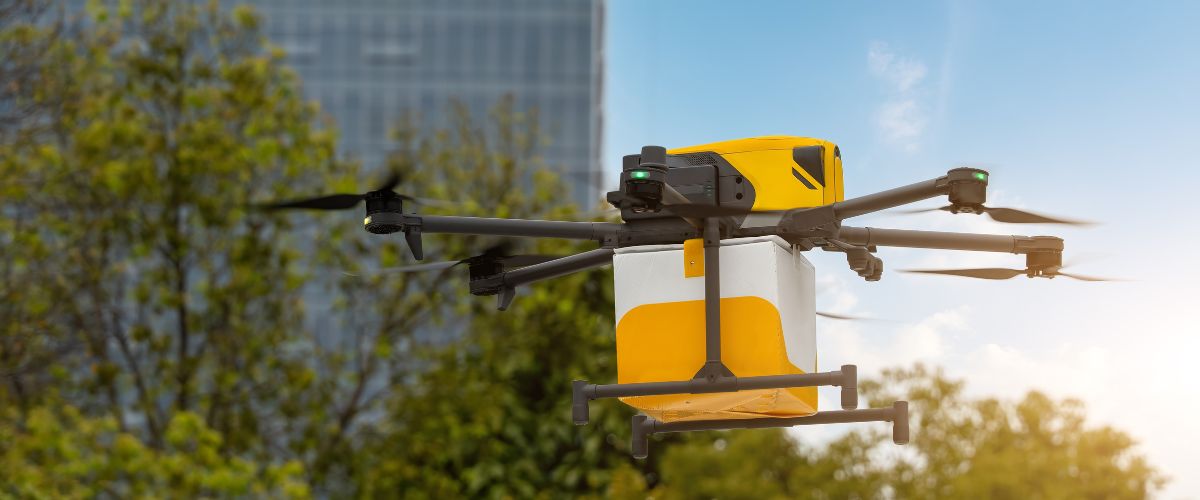The convenience offered by drones is undeniable: faster deliveries, reduced transit costs, and even environmental benefits through lowered carbon emissions. However, as with any innovative technology, the potential for new types of accidents and injuries arises. Drones operating at low altitudes may collide with individuals, fall from the sky due to mechanical failures, possibly even trigger car accidents by distracting unsuspecting drivers. A key question increasingly being asked in legal and regulatory circles is, “Who is liable if a drone causes an injury?”
Understanding Drone Regulations
Drones operate in a regulatory patchwork. The Federal Aviation Administration (FAA) oversees air safety and operational certifications, while personal injury and product liability claims are primarily governed by state law. This dual structure makes drone injury claims legally complex and jurisdictionally challenging. Understanding how federal flight regulations intersect with state tort claims is essential to help injured parties seeking fair compensation.
Physical & Indirect Injury Risks
Physical injuries from drones can take many forms. For example, a drone delivering a package might experience a mechanical malfunction during flight. According to FAA directives on operational drones, delivery drones and their payloads can weigh up to 55 pounds, thus illustrating the potential severity of an impact. If one malfunctions overhead, it might fall onto a passerby, causing traumatic head injuries, lacerations, or broken bones. Another risk arises from rotating propellers. Even a light brush against an unprotected hand or face can lead to serious cuts. In addition to direct physical harm, drones introduce indirect hazards. A low-flying drone could startle a driver, triggering swerving accidents or abrupt stops on busy roads.
Liability in Drone Injury Claims
As drones become more commonplace, it is important to consider that the drone operator or owner might be held responsible for any harm caused, intentional or otherwise. In a traditional personal injury scenario, a single driver might be at fault, or perhaps a manufacturer if a vehicle part fails. When it comes to drones, however, there is a longer list of possible defendants. The manufacturer could be sued if a design flaw or battery-related fire causes the drone to crash. The delivery company might be held liable if it fails to provide adequate operator training or used negligent routing protocols that place the drone in hazardous flight paths. Software providers could also be implicated if a navigation or sensor system glitch lead to an injury.
There is an added complication in cases involving shared or outsourced operations. Some logistics companies engage third-party contractors to handle various parts of the drone’s journey. Determining the “reasonable standard of care” for each involved party is still widely debated and largely untested in most courts. One reason for this difficulty is the pace of technological development. With drone technology advancing so rapidly, the application of reasonable standards of care is still taking shape as legal precedent continues to evolve. In personal injury and product liability cases, courts typically look to factors such as whether the party took reasonable preventive measures and adhered to available industry standards. Yet, in the absence of uniform guidance, personal injury lawyers and insurers must navigate murky legal territory.
Legal Tensions: Federal vs. State
The Federal Aviation Administration (FAA) is the primary authority in regulating United States airspace. Under Part 107 of FAA regulations, commercial drone operators must follow guidelines regarding pilot certification, maximum altitude, and other operational standards. However, personal injury law rests primarily at the state level, with each state defining its own negligence standards, statute of limitations, and product liability doctrines. This overlap can create confusion about which laws apply if a drone injures someone.
Although some states have enacted drone-specific legislation, the scope and enforcement of these laws vary. A significant concern is that the FAA’s regulations focus on safety and airworthiness but do not directly address issues such as pain and suffering, negligence, or economic damages related to an injury claim. This gap leaves many plaintiffs wondering whether they need to file claims in federal court under federal statutes or pursue state-level civil claims. Additionally, certain incidents might cross state lines – imagine a drone operator in one state flying into the airspace of another – further complicating jurisdictional questions. In many cases, attorneys representing drone accident victims must piece together arguments from existing aviation, product liability, and negligence precedents, often with uncertain outcomes.
Litigation Scenarios & Trends
As drone usage continues to climb, we can expect an increase in drone-related litigation. Among the types of lawsuits one might see are:
- Wrongful death and serious injury claims
- Class action suits for widespread defects across a certain model
- Premises liability claims where drone operations result in serious injury due to negligent and unsafe conditions
Autonomy is another game-changer. Some drones can make decisions in real time, using onboard sensors and AI to navigate around obstacles or select the best landing spot. If these algorithms malfunction and lead to injury, legal teams might raise interesting points about software reliability and the standard of care in AI-driven systems. Plaintiffs might argue that the drone’s autonomous features failed to account for common obstacles, or that software bugs led to erratic flight paths.
As drones ascend from prototype to everyday tool, the legal framework surrounding personal injuries is still catching up. From collisions and propeller lacerations to software malfunctions and AI-generated flight decisions, drones introduce unique challenges that test the limits of current liability rules. As the e-Commerce sector increasingly invests in smart drone fleets, personal injury lawyers may need to partner with technology experts to unravel the complex interplay among hardware components, flight software, and operational oversight.
We can expect more drone-related litigation and legislative developments in the near future, as recent proposed rule changes aim to expand their usage by removing some regulatory constraints. Ultimately, drones hold tremendous promise for logistics – but innovative technology should not come at the expense of safety and accountability. It is up to attorneys, legislators, and industry leaders alike to make sure they operate safely and responsibly.
Montlick Injury Attorneys stands ready to guide clients through the complexities of drone-related personal injury cases. If you are a victim, contact us to get help.


